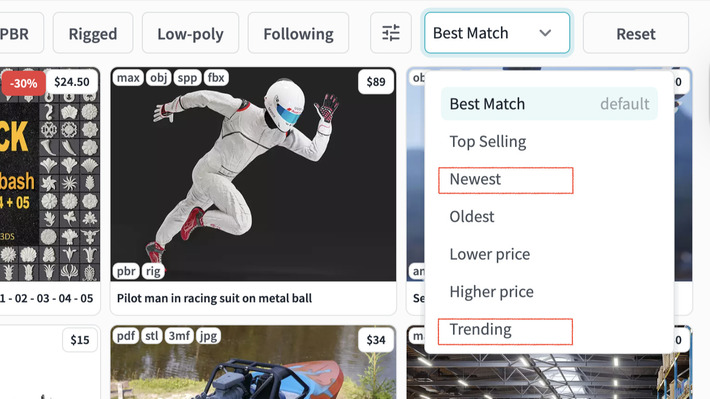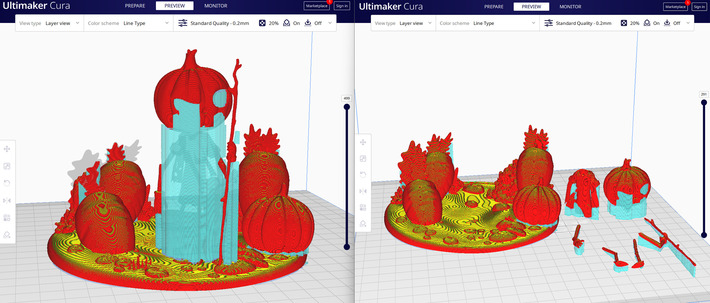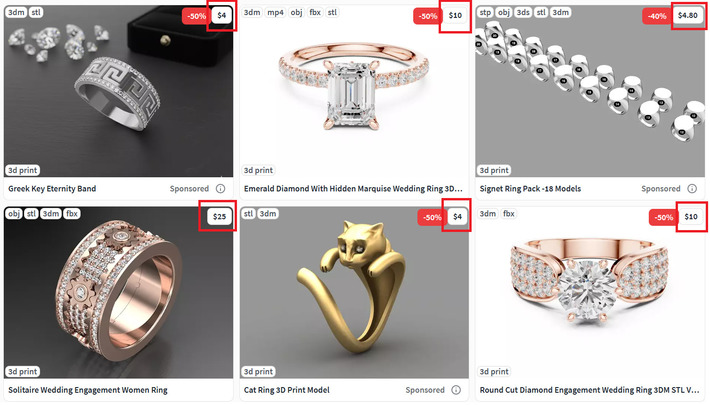TL;DR
Find your niche – specialize in designs that stand out and match real demand.
Invest in quality – polished, printable models win customers.
Optimize your listings – clear titles, precise descriptions, and strong visuals help your models get noticed.
Price strategically – balance affordability with fair value for your time and skills.
Promote and adapt – market your work, listen to feedback and keep refining your craft.
Selling 3D print models is one of the most rewarding ways to turn your design skills into income. But with thousands of creators entering the space every year, how do you make sure your work gets noticed and purchased? Whether you’re a hobbyist looking to monetize your creations or a professional aiming to build a scalable business, learning how to sell 3D print models online is the first step. In this guide, we’ll walk through everything you need to know, so you can confidently start your own 3D printing business.
Find Your Niche
Instead of trying to design “everything for everyone,” focus on a specific niche. Think about what excites you and what’s in demand: miniatures, jewelry, cosplay or even props. Earlier, we published an overview of 3D print market trends, which suggested growth across many 3D printing categories. That means there may be opportunities in almost any niche – but choosing one area to specialize in will make your portfolio more recognizable and increase your chances of standing out in marketplace searches. Buyers looking for a specific type of design are also more likely to trust a seller who focuses on that category.
So how do you actually find a niche? Start by researching the marketplace: look at category pages, the number of listings and how often models have reviews or recent uploads. Pair this with community signals from forums and social media groups to see what people are asking for. To evaluate demand, pay attention to proxy indicators such as search results (how crowded is the category), reviews (is there evidence of activity) and upload frequency (are other designers actively creating in this space?).
As a rule of thumb:
- High competition with high activity can still be an opportunity if you bring something unique.
- Low competition with steady activity is often a sweet spot.
- Very low activity may suggest slower sales, so you might want to treat those niches more as passion projects.
And because reports can get outdated quickly, stay flexible – monitor “Newest” or “Trending” sections, follow hobby trends and pay attention to pop culture or seasonal events that can spark fresh demand.

Focus on Quality and Printability
Great ideas only matter if they can actually be printed. Buyers are looking for 3D models that are both creative and practical, which means your designs should be optimized for smooth printing. Here are some things to keep in mind when preparing your files:
- Limit supports and overhangs – A printable model shouldn’t rely on excessive supports or include too many steep overhangs. These make printing more difficult and less reliable for buyers.
- Check thickness and details – Avoid very slim or fragile details that may not survive printing. If a design requires fine elements, consider reinforcing them.
- Split large models into parts – For objects bigger than a standard print bed, you can separate the design into smaller pieces and add connectors so it can be easily assembled later. This makes the model more accessible to buyers with smaller printers.
- Match printer type to design – Remember that different printers excel at different things. Highly detailed miniatures, for example, are usually better suited for resin printers.
- Test models in popular slicers – Before uploading, run your designs through common slicing software to check for errors. Fixing these yourself ensures buyers won’t have to troubleshoot later.
- Consider multicolor printing – If your model is designed for multi-filament printing, optimize it so filament waste stays reasonable. No buyer will be happy if they need to use twice the filament in waste compared to the final model.
- Think about positioning – Slice your model and check whether it can be printed in a stable position. Adjust orientation to reduce print failures.
- Provide assembly instructions – If your design is split into multiple parts, prepare a simple guide showing how to put them together. This small extra step improves the buyer’s experience.
- Use connectors instead of glue – Whenever possible, design connectors that snap or slot together instead of requiring glue. Buyers appreciate easier, cleaner assembly without sticky fingers.
By thinking ahead about the printing process, you not only improve the buyer’s satisfaction but also increase the chances of repeat customers and positive reviews.

Optimize Listings for Search and Sales
Good design isn’t enough – buyers also need to be able to find and trust your models. Optimized listings improve visibility, attract the right audience and help establish credibility. Here’s how to make your listings stand out:
- Titles – Keep them clear and descriptive. There’s no need to add keywords like .STL or 3D Printable in your title – CGTrader automatically includes these. Instead, focus on naming your model in a way that makes sense to buyers. For example: “Avengers Endgame IRON MAN Mark 85 MK85 Helmet.”
- Descriptions – Include all essential details: dimensions, file formats and clear printing instructions. If possible, add suggestions for best printing results, such as filament type, layer height, support type or perimeters. This extra guidance makes your model more buyer-friendly.
- Tags – Think like a buyer. What words would they type when searching? For example, the Iron Man Mark 85 Helmet could use tags like: avengers, marvel, iron man, helmet, cosplay.
- Visuals – Upload clean renders and, if possible, photos of real test prints. Good visuals immediately signal professionalism and reassure buyers about quality.
Strong listings can improve your visibility in 3D marketplaces and help establish credibility with buyers. A polished, professional storefront makes it easier for customers to trust your work.

Set Smart Pricing
Pricing can feel tricky, especially when you’re just starting out. Should your model cost $10 or $50? The answer depends on how your design compares to what’s already available. Start by researching similar models on the marketplace. Search for items in the same category, with similar detail and purpose and compare their pricing. This helps you identify a realistic range.
Here’s what to consider:
- Uniqueness – If your design is one-of-a-kind or fills a gap in the market, you can often price it higher.
- Level of detail – Highly detailed or complex models generally justify a higher price than simple, minimal designs.
- Print readiness – Well-prepared files that require little to no fixing add value and can be priced above average.
- Market comparison – Look at the most relevant items, not just the cheapest ones. This will help you see what buyers are actually willing to pay.
Remember, pricing isn’t fixed forever. You can experiment, adjust and refine as you gather sales data and customer feedback. Over time, you’ll find the sweet spot where your models are attractive to buyers and still reward the time and skill you’ve invested.

Market Your Work Beyond the Marketplace
Don’t rely only on marketplace traffic. Share your portfolio on social media, 3D printing forums and creator communities to increase visibility. Content like behind-the-scenes posts, tutorials or time-lapse videos of your modeling process may help spark interest. Some buyers also appreciate learning the story behind a design and this type of personal branding may encourage trust and repeat sales.
Treat It Like a Business
Finally, track your results. Look at what sells, what doesn’t and why. Customer feedback is gold – listen carefully and adjust your designs or listings accordingly. Consistency and ongoing improvement can play an important role in long-term success.
Final Thoughts
Selling 3D print models is a unique blend of creativity and entrepreneurship. By choosing a niche, focusing on print-ready quality, creating optimized listings and marketing your work, you can begin building a sustainable business around your designs.
Once you’ve taken the first steps, you may find it useful to read our article How to Increase Your Sales on CGTrader: Tools, Tips, and Smart Strategies, which highlights additional ways and tools that can support you in growing your sales on CGTrader.
So if you’ve been wondering how to start, the best time is now – upload your first model, test the waters and begin your 3D print model selling journey.
Happy modeling!








Comments